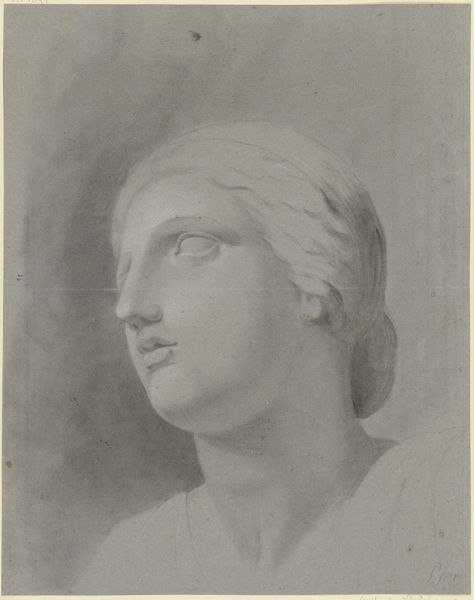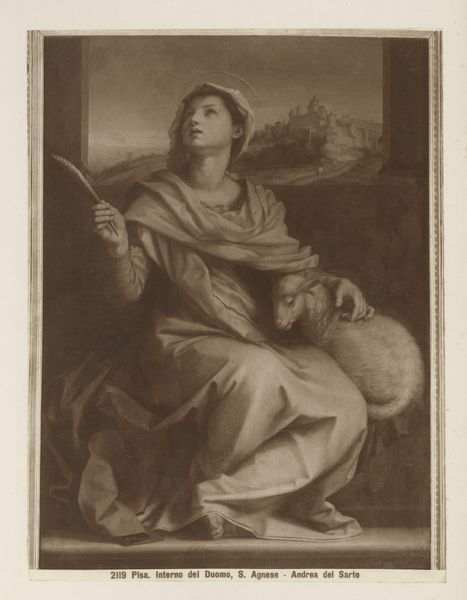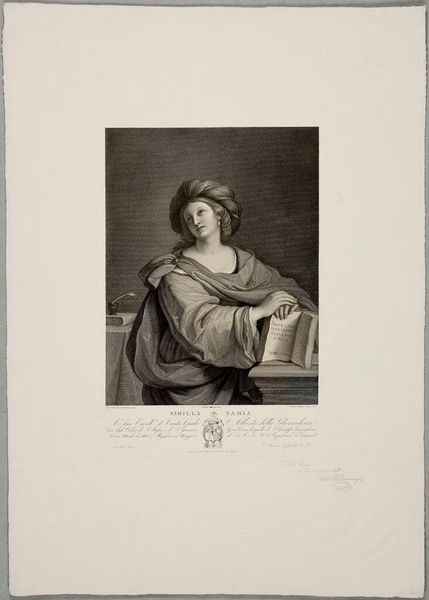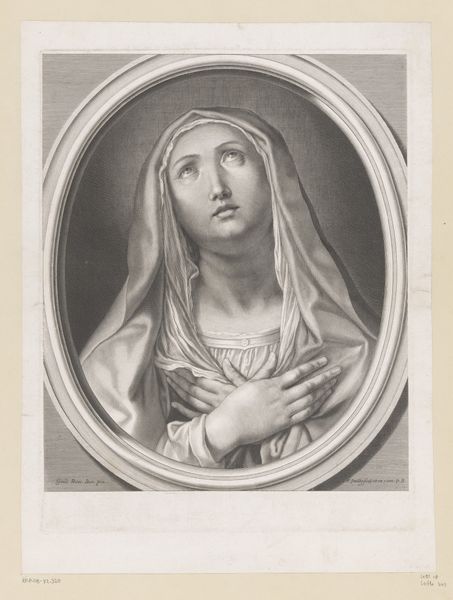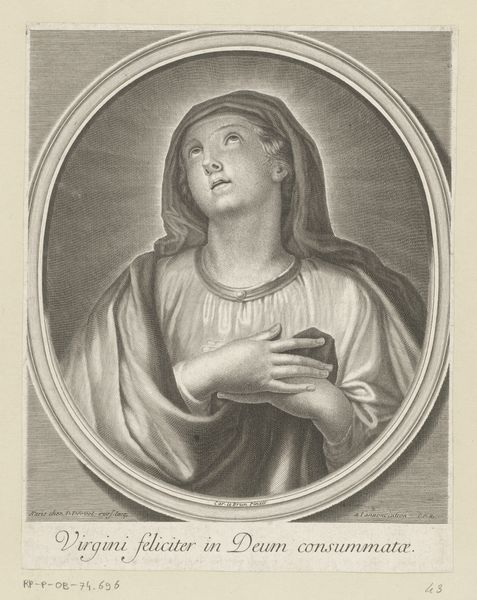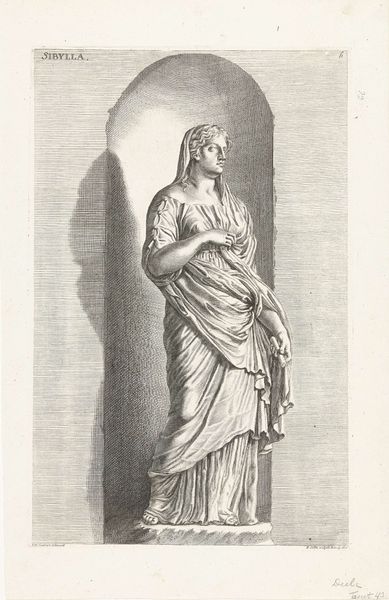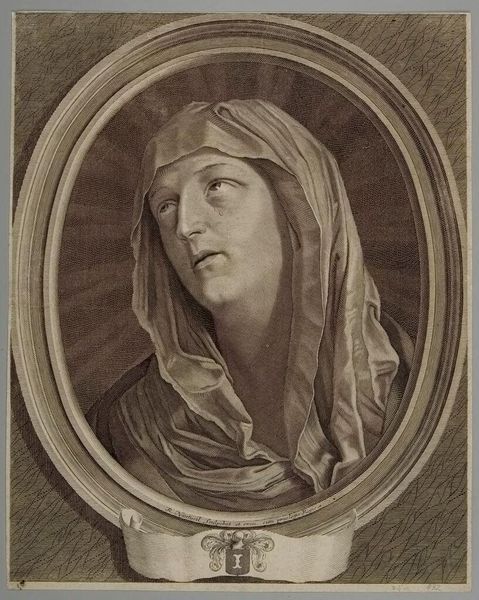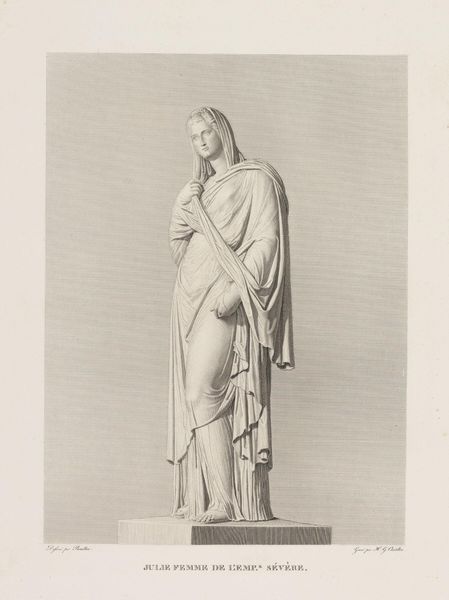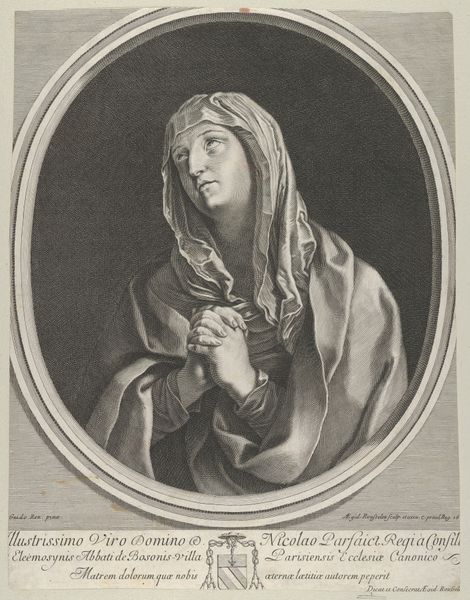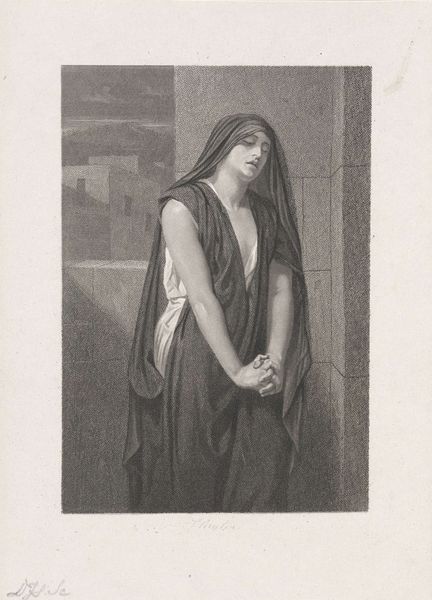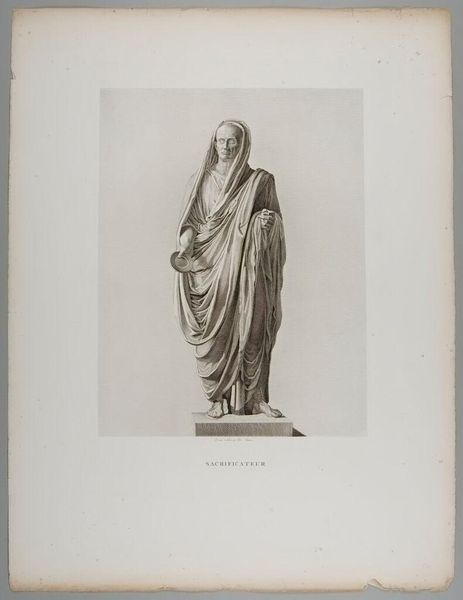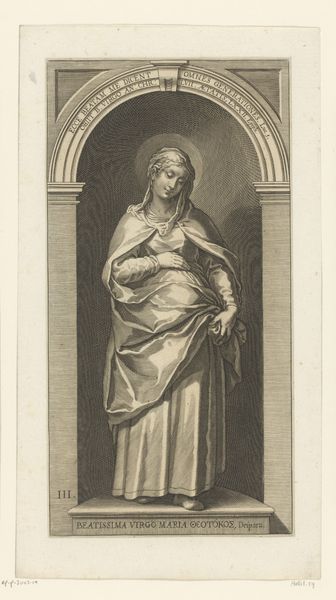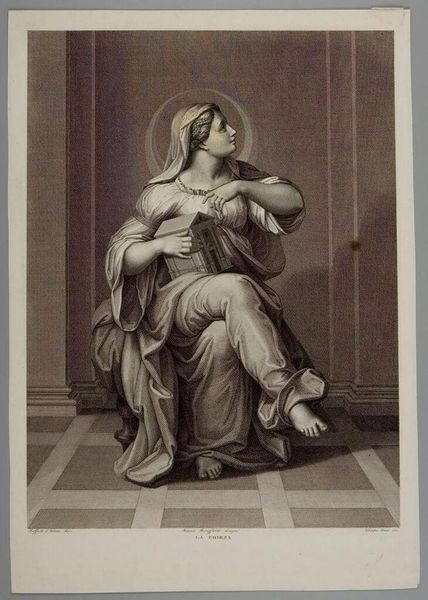
Dimensions: height 189 mm, width 118 mm
Copyright: Rijks Museum: Open Domain
Editor: Here we have Dirk Jurriaan Sluyter's "Biddende vrouw," created sometime between 1826 and 1886. It’s a print, an engraving, currently held at the Rijksmuseum. There's something so ethereal about her pose and the stark contrasts in light and shadow. What are your observations about the form and structure of this work? Curator: Note the subtle use of chiaroscuro. The artist employs light not merely to illuminate but to sculpt form. Consider the deliberate arrangement of folds in her garment, each line contributing to a sense of volume and emotional weight. Observe, too, how the composition is framed, almost as if staged for optimal dramatic impact. Editor: I see what you mean about the folds—they lead the eye upward, mirroring her gaze. The artist has captured such vulnerability with very simple tools. Is that intentional? Curator: Intentionality is a question of debate, but we can analyze the effect. The simplicity of line allows for an almost abstract reading. Remove the figure, and what remains? A series of intersecting planes, light and shadow in dialogue. Think about how the engraving process itself impacts the aesthetic - what kind of marks can it produce? Editor: That’s a helpful way to see it. I was so focused on the emotion, I missed the architecture of the piece itself. Curator: Indeed, appreciating the artwork is to examine its intrinsic components and their contributions to its overall essence. What have you observed? Editor: I see that even within what seems a simple portrait, there's such a complex layering of shapes and contrasts creating depth and movement. It's more than just a depiction of a woman praying; it’s an exercise in form. Curator: Precisely. Now consider other prints from the period. Where do you see similarity or divergence of style?
Comments
No comments
Be the first to comment and join the conversation on the ultimate creative platform.
